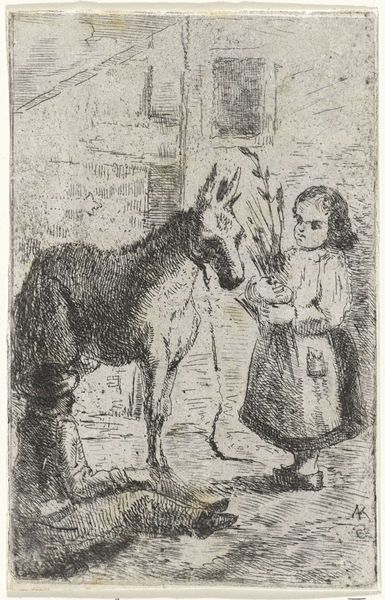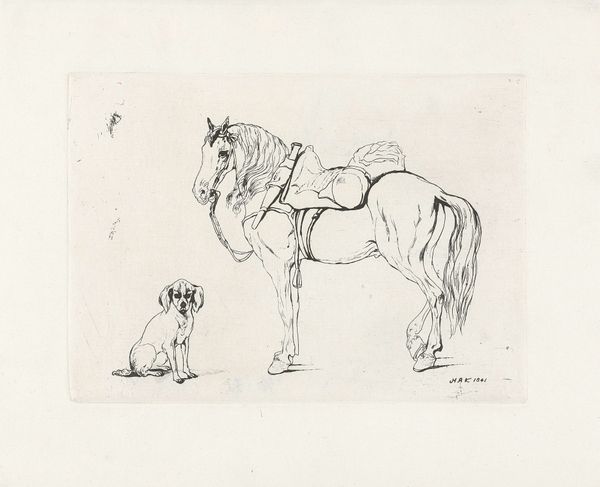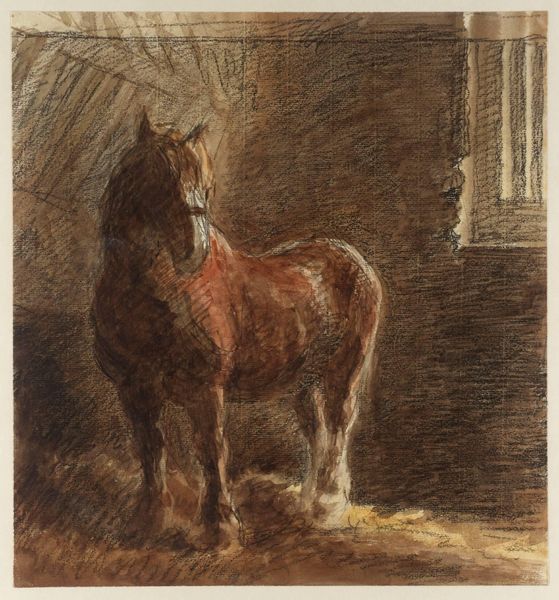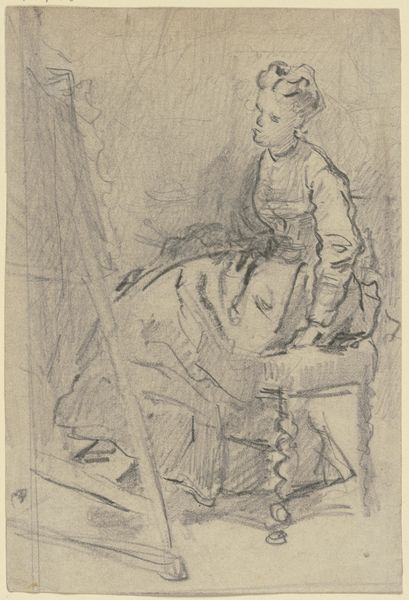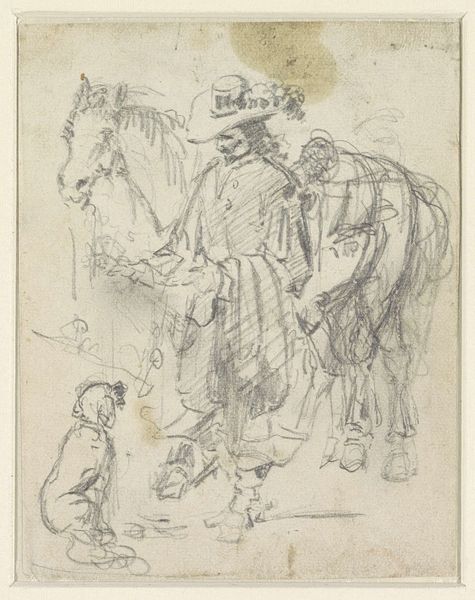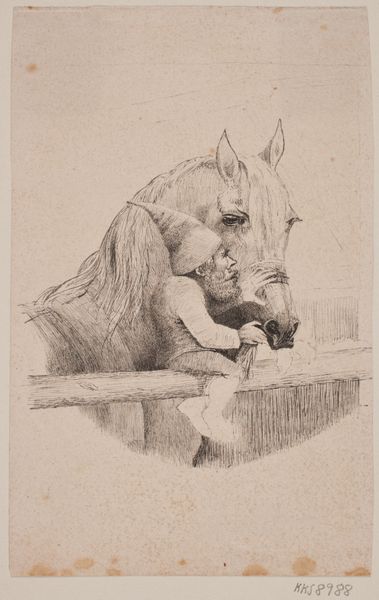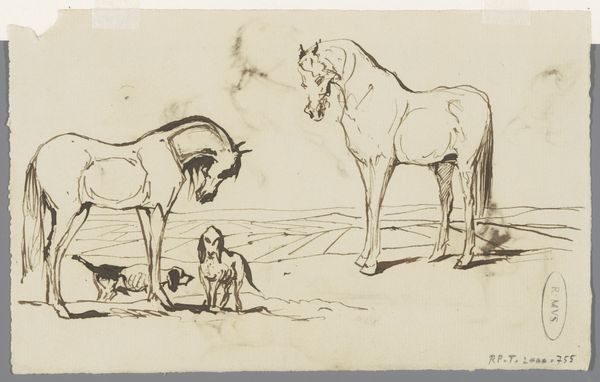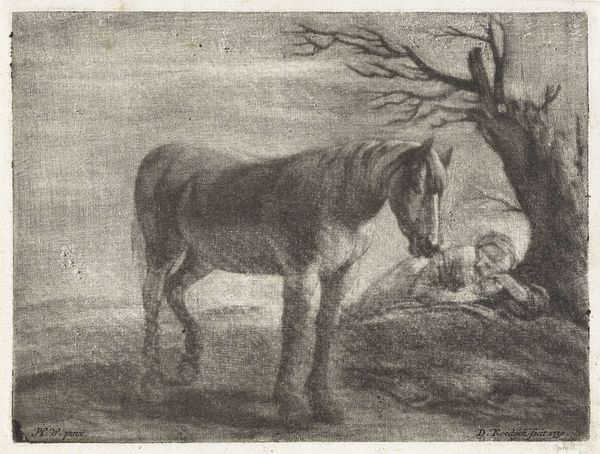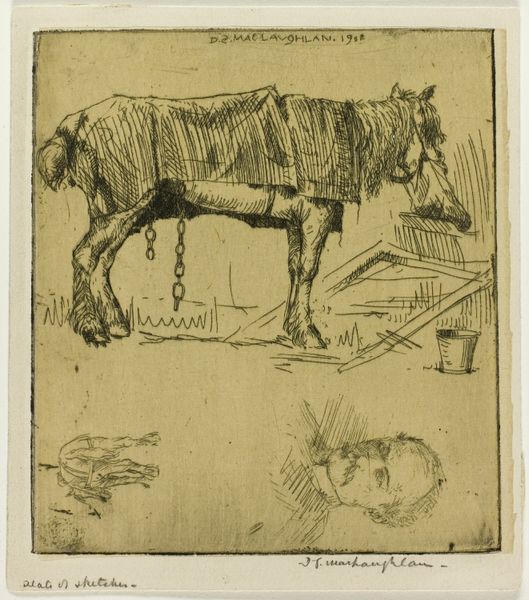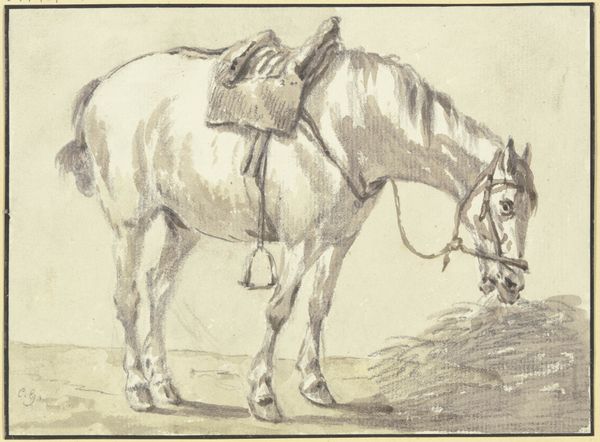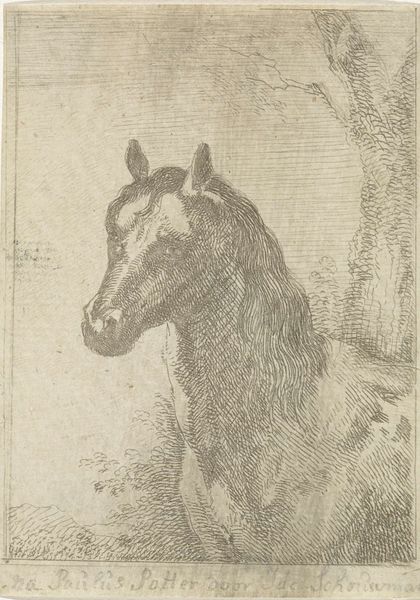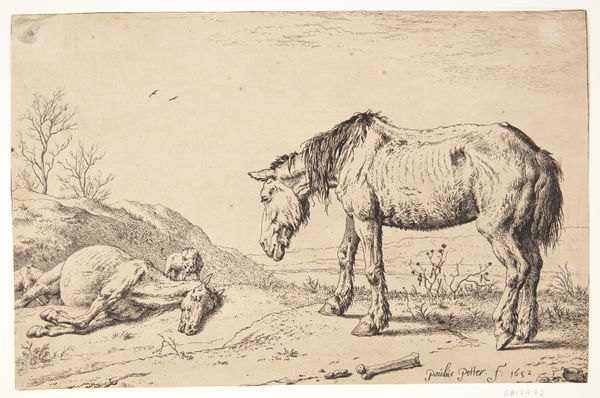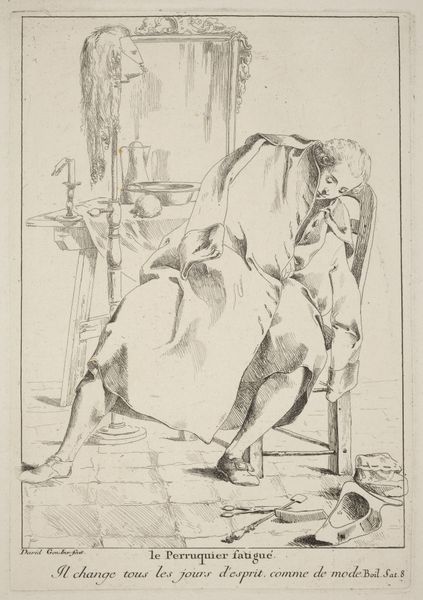
drawing, paper, ink
#
portrait
#
drawing
#
pen sketch
#
pencil sketch
#
landscape
#
figuration
#
paper
#
ink
#
pen work
#
genre-painting
Dimensions: height 155 mm, width 101 mm
Copyright: Rijks Museum: Open Domain
Curator: Looking at this, I’m immediately struck by the sketchiness of the lines, a raw, almost unfinished quality to the whole scene. It gives it a kind of poignant intimacy. Editor: We’re viewing a work by Arnoud Schaepkens titled "Man en meisje bij een ezel," created sometime between 1831 and 1904. It's an ink drawing on paper—a genre scene depicting a man and a young girl with a donkey. Curator: Yes, that hasty quality in the linework...to me, it emphasizes the humble quality of everyday life depicted here, especially when it comes to these social dynamics surrounding labor, represented here by the donkey, a figure of labor. The paper almost looks worn too, doesn’t it? Editor: It does lend a tactile dimension, absolutely. I’m curious about the artist’s decision to leave the lines so exposed. Is it a deliberate attempt to depict, say, a sense of rustic authenticity? Perhaps nodding towards growing artistic interest in depicting peasant life authentically. Curator: Perhaps. The composition does feel like a stage. And think about it. This piece being rendered in ink also highlights the broader availability of paper and ink, marking a shift toward a growing audience consuming inexpensive visual culture in the 19th century. Editor: That makes sense, and the quick, sketch-like nature may even imply an understanding, or perceived idea of capturing a moment for posterity. There's something subtly poignant about their shared presence. The man seems at rest, the girl seems at ease feeding a docile animal, an undercurrent of calm to it all. Curator: Indeed. Considering this piece reflects upon social shifts regarding class, industrial change, and expanding markets for mass production – not just regarding this piece alone, but rather in how it communicates artmaking and reception at large during that period. Editor: The artist appears invested in conveying a truth—a connection to the natural world that industrialization threatened. The medium of ink on paper only contributes to this. Thank you for shedding a new perspective on that, very thought-provoking.
Comments
No comments
Be the first to comment and join the conversation on the ultimate creative platform.
